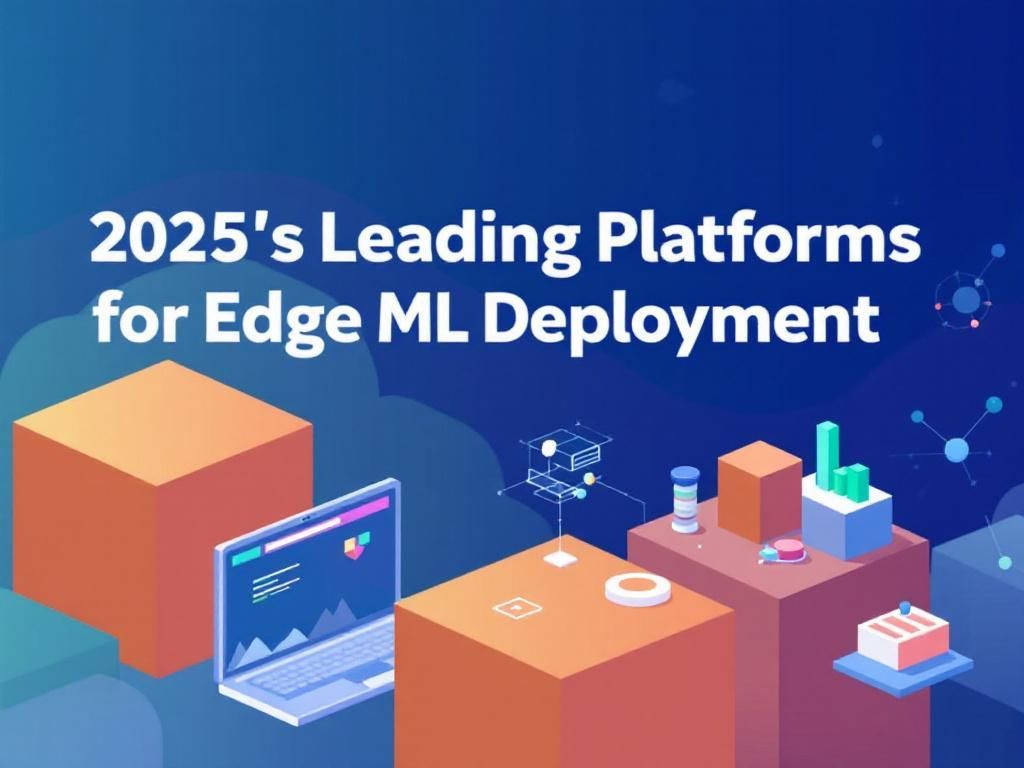The landscape of machine learning (ML) is evolving rapidly, with edge computing emerging as a game-changer for deploying AI models closer to the data source. As we look ahead to 2025, several platforms are positioning themselves as leaders in the edge ML deployment space. This article explores these platforms, their unique features, and what makes them stand out in an increasingly competitive market.
Understanding Edge Machine Learning
Edge machine learning refers to the integration of machine learning algorithms with edge devices, allowing data processing to occur closer to where the data is generated. This reduces latency, saves bandwidth, and enhances privacy by minimizing the amount of data sent to the cloud. Key benefits of edge ML include:
- Improved real-time data processing
- Reduced operational costs
- Enhanced data privacy and security
- Lower bandwidth requirements
Key Players in Edge ML Deployment
As we move towards 2025, several platforms are at the forefront of edge ML solutions. Below is a comprehensive overview of these leading platforms:
1. NVIDIA Jetson
NVIDIA’s Jetson platform provides a powerful ecosystem for developing AI applications at the edge. Its hardware includes modules like the Jetson Nano and Jetson Xavier, designed for diverse applications ranging from robotics to smart cities.
Features:
- Support for multiple frameworks including TensorFlow and PyTorch
- High-performance GPU capabilities
- Extensive SDKs and APIs for developers
2. Google Edge TPU
The Edge TPU is a purpose-built ASIC designed to execute ML models on edge devices. Google’s solution is particularly optimized for low-power, high-performance inference tasks.
Features:
- Seamless integration with Google Cloud services
- Support for TensorFlow Lite
- Robust tools for model optimization
3. AWS IoT Greengrass
Amazon’s IoT Greengrass extends AWS capabilities to local devices, enabling them to act on the data they generate while securely communicating with the cloud for management, analytics, and storage.
Features:
- Local execution of Lambda functions
- Integration with AWS services
- Machine learning inference capabilities
4. Microsoft Azure IoT Edge
Azure IoT Edge allows developers to deploy cloud workloads, including AI, on IoT devices. This ensures that devices can operate with minimal latency while maintaining connectivity to the cloud.
Features:
- Support for custom Azure services on edge
- Utilization of Azure Machine Learning for model management
- Wide range of IoT device compatibility
5. IBM Edge Application Manager
IBM’s solution focuses on automating the deployment of machine learning models on edge devices and managing these deployments at scale, which is ideal for enterprise solutions.
Features:
- Advanced analytics capabilities
- AI model lifecycle management
- Security features for safe deployment
Key Considerations for Choosing an Edge ML Platform
When selecting an edge ML platform, organizations should consider various factors:
- Compatibility: Ensure the platform supports the necessary hardware and software frameworks.
- Scalability: The chosen solution should be capable of scaling as more devices are added.
- Security: Look for built-in security features to protect sensitive data.
- Cost: Evaluate the total cost of ownership, including hardware, software, and operational expenses.
Emerging Trends in Edge ML
As the technology continues to evolve, several trends are shaping the future of edge ML:
1. Increased Adoption of 5G
The rollout of 5G networks enhances the capabilities of edge devices, providing higher bandwidth and lower latency, which are crucial for real-time ML applications.
2. Federated Learning
Federated learning allows models to be trained across multiple decentralized devices while keeping data localized. This approach enhances privacy and reduces the need for extensive data transmission.
3. Enhanced Interoperability
Future edge ML platforms will focus on interoperability, enabling different devices and systems to work together seamlessly, driving broader adoption across industries.
4. AI-Driven Edge Devices
Devices with integrated AI capabilities will become more prevalent, enabling smarter data processing and decision-making at the edge without relying solely on cloud resources.
Conclusion
The future of machine learning at the edge is promising, with numerous platforms emerging as leaders in this space. As technology evolves, businesses must stay informed about these developments to leverage edge ML effectively. By choosing the right platform and keeping an eye on emerging trends, organizations can harness the power of edge computing to enhance their operational efficiency and drive innovation.
FAQ
What is Edge ML deployment?
Edge ML deployment refers to the practice of running machine learning models on edge devices, such as IoT devices, smartphones, and embedded systems, rather than relying on centralized cloud servers.
What are the benefits of Edge ML deployment?
Edge ML deployment offers benefits such as reduced latency, improved data privacy, lower bandwidth usage, and the ability to operate in environments with limited or no internet connectivity.
Which platforms are leading in Edge ML deployment for 2025?
In 2025, leading platforms for Edge ML deployment include NVIDIA Jetson, Google Coral, Microsoft Azure IoT Edge, Amazon SageMaker Neo, and Intel OpenVINO.
How does Edge ML improve real-time analytics?
Edge ML improves real-time analytics by processing data locally on devices, allowing for immediate insights and actions without the delays associated with cloud data transfer.
What industries benefit the most from Edge ML deployment?
Industries such as healthcare, manufacturing, automotive, and smart cities benefit significantly from Edge ML deployment due to their need for rapid data processing and real-time decision-making.
What are the challenges of deploying ML at the edge?
Challenges of deploying ML at the edge include limited computational resources, device heterogeneity, managing updates and security, and ensuring model accuracy in diverse environments.




